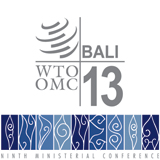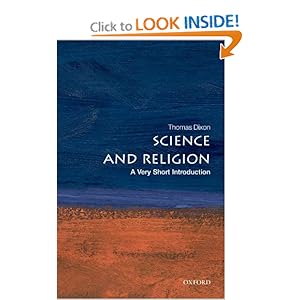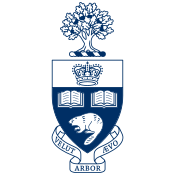…The oldest known pottery using nano-sized particles is thought to be the Lycurgus chalice, which dates back to the late fourth century AD, and which can be seen in the British Museum. The Roman chalice has raised frieze showing the myth of King Lycurgus, and is made from glass which appears green in reflected light, but when light is shone directly through the glass it appears translucent red. This unusual optical effect is caused by 70 nm particles of silver and gold contained within the glass. The glass contains 40 parts per million of gold and 300 parts per million of silver, and the particles consisting of seven parts silver to three parts gold. It is possible that, while the glass was being made, some scrap metal and slag containing silver and gold was added, and the unusual effect was achieved by accident. The understanding that glass could be coloured red by adding small amounts of gold is often credited to Johann Kunckel, who worked in Germany in the late seventeenth century.
Important discoveries:
1857 Michael Faraday discovered colloidal gold
1858 Internal combustion engine developed by Jean Lenoir
1879 light bulb invented by Thomas Edison
1905 Albert Einstein explains the existence of colloids
1904 Tea bag designed by Thomas Sullivan
1932 Langmuir discovers layers of atoms one molecule thick
1932 Gas turbine jet engine is patented by Frank Whittle
1958 Feyman induced that there is plenty of room to work at the bottom (nanoscale)
1958 Integrated circuit developed by Jack Kilby and Robert Noyce
1974 The word nanotechnology first used
1973 First public call on a cell phone made
1981 IBM invent a machine which can move single atoms around
1981 The first IBM PC is launched
1985 A new form of carbon is discovered C60 (Harry Kroto et al)
1985 Windows operating system written by Microsoft
1986 Scanning tunneling microscope was developed in IBM lab, an important tool for imaging, measuring and manipulating matter at the nanoscale.
1990 WWW protocol developed by Tim Berners-Lee
1991 Carbon nanotubes discovered
1993 First high quality quantum dots prepared
1997 Nanotransistor built
2000 DNA motor made
2001 Prototype fuel cell made using nanotubes
2002 Stain repellent trousers reach the high street
2003 Prototype nano solar cells produced
……..
novel solutions that are appearing that corporate nanotechnology include: Synthetic bone, biosensors, tennis balls, stain repellent clothing self cleaning and scratch proof glass, super tough car and plane coatings, fuel additives, targeted drug delivery particles…
(the basics of Nanotechnology, Oxford Univ’s Begbroke Science Park) http://www.conted.ox.ac.uk/courses/professional/nanobasics/nano/interface.html
Power for life
Did the humble mitochondrion — the powerhouse of the cell — play a key role in the evolution of life?
Nature 27 October, 2005
John F. Allen
How living things obtain, store, convert and use energy once aroused intense debate. Careers and reputations were built and destroyed in the ‘ox-phos wars’ about the mechanism of oxidative phosphorylation, in which electron transport is coupled to the phosphorylation of ADP, storing energy in the form of ATP. Today there is a tendency to see the problem as solved, and oxidative phosphorylation as worthy but dull. A few abstruse mechanistic details may be unresolved, but these are for obsessives, because we know, broadly, how mitochondria make ATP. It is by the chemiosmotic mechanism proposed long ago by Peter Mitchell. So mitochondria attract the molecular biologist’s damning epithet housekeeping’. And what could be duller?
One complication is that mitochondria have genes. However, there is no cause for alarm. These genes are few, are all for housekeeping, and have survived from the symbiotic bacteria that first brought respiratory electron transfer and ATP synthesis to the otherwise fully formed eukaryotic cell. This idea, too, was once controversial. But all is now settled, and mitochondrial origins can be left to those with a taste for theoretical biology, untestable hypotheses, and the pondering of distant, one-off events.
Admittedly, mitochondria occasionally capture the headlines. They are inherited solely through the mother, so their genomes sometimes provide decisive forensic evidence and tease modern humans about their ancestry. Then there is the production of oxygen free radicals, which can promote ageing. Furthermore, reproductive cloning must overcome the irritation of mitochondrial genomes, but these can probably be replaced from the healthy cells of a donor — a third genetic parent. In Britain, the Human Fertilisation and Embryology Authority has recently given the green light to John Burn of the Institute of Human Genetics at the University of Newcastle upon Tyne to do just this. “My belief is that we are changing a battery that doesn’t work for one that does…changing the mitochondria won’t affect the important DNA,” states Burn. confidently. “Mitochondria are not part of the genetic material that we consider makes us, as human beings” (The Times, 9 September 2005).
The central thesis of Nick Lane’s book Power, Sex, Suicide is the antithesis of Burn’s view. I’m with Lane here: mitochondria have everything to do with what makes us who we are. Lane’s audacious introduction, which describes mitochondria as “clandestine rulers of the world”, heralds “striking new insights into why we are here at all, whether we are alone in the universe, why we have our sense of individuality, why we should make love, where we trace our ancestral roots, why we must age and die — in short, into the meaning of life.”
I have mentioned Lane’s title to several colleagues, and they smiled, as I did. Provocative, yes; memorable, yes; but seriously over the top. Isn’t it time popularizers of science sobered up a bit and stopped shouting for attention? Lane has a point, of course: power means the rate of doing work, or expending energy; sex refers to the odd, unexplained fact of maternal inheritance; and cell suicide is apoptosis. But this book delivers vastly more than lurid synonyms for dry, scientific terms. These three horsemen are connected, by mitochondria, and not accidentally. That still leaves “the meaning of life”. I fear that sheer embarrassment will impede this book’s citation in journal articles. This is unfortunate, because parts of it qualify as primary literature, by announcing at least two major, original and testable hypotheses. I scribbled “He should publish this” in the margin,
before realizing that he had.
One new hypothesis explains “why there are two sexes”. Lane proposes that a tuning, or dialogue, occurs between the nuclear and mitochondrial genetic systems during the formation of egg cells. Thus the real distinction between male and female is that male gametes (sperm) have mitochondria that must be eliminated so as not to interfere with this specific, carefully selected rapport. Perhaps egg mitochondria may also be pure genetic templates, and energetically disabled, as outlined in Lane’s previous book Oxygen (Oxford University Press, 2002). To my mind, Lane’s proposal suggests that reproductive cloning, no matter how ‘healthy’ the mitochondria, is taking out a genetic mortgage that future generations will have to repay, and with interest, as donated mitochondria will not have been selected to be compatible with the nucleus. A further proposal is that genetic imprinting is a consequence of having tuned only half of the fertilized egg’s nuclear genes: those from the mother. Another new idea is that damaged mitochondria might be replaced, by intracellular selection, during ageing.
The general reader is here forewarned that Lane comes down decisively in favour of some theories that are still regarded as ‘fringe’, and against others that have influential and highly cited (‘respectable’) proponents. I am sure this book will be attacked elsewhere as unbalanced. Bear this in mind when you read about Mike Russell’s superb scenario for the chemiosmotic properties of the earliest cells, established by geothermal convection. Consider it, too, when reading of “the hydrogen hypothesis for the first eukaryote” from Bill Martin and Miklos Müller. Believe me, people get angry at the idea of the primordial eukaryote being a methane-producer in partnership with a hydrogen-excreting anaerobe that was ancestral to both the mitochondrion and the obscure hydrogenosome. Perhaps the ‘hydrogen hypothesis’ is an affront to eukaryotic dignity. Personally, I think it is a liberating idea, and one that will stand the test of time.
The book was written for anyone interested in some of the most profound questions of twenty-first-century science. The central proposals of Power, Sex, Suicide are clearly and forcefully propounded, are serious, have far-reaching consequences — and may even be correct. After all, not so long ago, the chemiosmotic and endosymbiont hypotheses were championed only by those thought to be mad, bad and dangerous to know. Now we read that “the dynamics of the respiratory chain are a force that has shaped the whole trajectory of life”. This is a new take on why we are here. Perhaps all genes are ‘housekeeping’ genes, and vectorial electrons and protons were the authors of evolution — and are still its movers and shakers. Perceptions change. Do, please, read this book.
John F. Allen is in the School of Biological and Chemical Sciences, Queen Mary, University of London, Mile End Road, London E1 4NS, UK.
The 21st century is all about conserving energy. The push towards energy-efficient buildings, vehicles and lifestyles is both fashionable and necessary, but it’s also ironic. Our pattern of ever-increasing energy consumption is deeply rooted in our history, not just since the Industrial Revolution, but since the origin of all complex life on Earth.
According to a new hypothesis, put forward by Nick Lane and Bill Martin, we are all natural-born gas-guzzlers. Our very existence, and that of every animal, plant and fungus, depended on an ancient partnership, forged a few billion years ago, which gave our ancestors access to unparalleled supplies of energy and allowed them to escape from the shackles of simplicity.
To Lane and Martin, energy supply is the key factor that separates the two major types of cells on the planet. The first group – the simple prokaryotes, such as bacteria and archaea – are small, consist entirely of single cells (or at most, simple colonies), and have little in the way of internal structure. They are very different to the eukaryotes, the group that includes all complex life on the planet, including every animal, plant, fungus and alga. Their cells are large, structured, and filled with many internal compartments. These include the nucleus, where DNA is stored, and the mitochondria, which act as tiny powerhouses (more on these later).
Prokaryotes can do many incredible things. They can eat food as unappetising as oil and live in places where literally not a single other living thing can thrive. But despite their boundless innovations, they have always remained simple. While eukaryotic cells have evolved into large and complex forms like animals and plants on at least six separate occasions, prokaryotes have always remained simple. Some have nudged into more complex territory – for example, by becoming incredibly big – but all of these pioneers have stopped short. Only once in history have simple prokaryotes made the transition to complex eukaryotes. Why?
Lane and Martin think that the answer lies within the mitochondria. They were once prokaryotes themselves. In the depths of history, a free-living bacterium was engulfed by a larger cell and was neither digested nor destroyed. Instead, it was domesticated. It forged a unique and fateful partnership with its host, eventually becoming the mitochondria of today. All of this happened just once in life’s history and all of today’s eukaryotes are descended from that fused cell. Indeed, many scientists view the origin of mitochondria as the origin of the eukaryotes themselves.
Mitochondria are the power centres of eukaryotic cells. Within their walls, proteins carry out chemical reactions that combine food with oxygen to produce ATP, the molecule that acts as a cell’s energetic currency. These proteins sit inside the mitochondrion’s inner membrane, which is repeatedly folded like ruched fabric. These folds provide a greater surface area for energy-producing reactions to occur, allowing the mitochondria to produce a substantial supply to its host. That gives eukaryotes a major advantage over their prokaryotic peers: with more available energy, they can afford to have more genes.
The transition from a simple prokaryotic cell to a complex eukaryotic one was accompanied by a large rise in the number of genes. The average bacterium only has around 5,000 genes but even the smallest eukaryotes have an average of 20,000. But having more genes comes at a cost. The simple act of reading the gene and translating it into a protein (biologists would say “expressing” it) requires energy. This process takes up a whopping 75% of a cell’s energy budget.
In the same way that a gadget-hoarding human would ramp up a sizeable electricity bill, a cell with a larger genome would face a substantial energy burden. And just like the gadget fanatic has a limited budget to spend on their escalating bills, a bacterium has only so much energy to devote to expressing its genes. Every extra gene reduces the amount of available energy per gene. Its only option would be to produce fewer proteins, which would put it at a disadvantage compared to its peers.
So prokaryotes are stuck in an energetic rut. They sit at the bottom of a deep evolutionary canyon, surrounded by steep walls that require a massive influx of energy to scale. Unable to surmount these barriers, they are stuck with small genomes and simple structures. Indeed, evolution tends to push bacteria towards ever more compact genomes, mercilessly pruning away superfluous genes. Today, in a million ‘letters’ of DNA, eukaryotes have around 12 genes while the average bacterium has around 1,000!
Eukaryotes, however, are not so constrained. Thanks to their mitochondria, they have energy to spare. The average eukaryote can support a genome that’s 200,000 times larger than that of a bacterium, and still devote a similar amount of energy to each of its genes. As Lane and Martin say, “Put another way, a eukaryotic gene commands some 200,000 times more energy than a prokaryotic gene.”
The eukaryotic genome is like a gas-guzzling monster truck, compared to the sleek, sports-car genomes of prokaryotes. The benefits of this lumbering size can’t be overstated. By having enough energy to support more genes, they have room to experiment. It’s no surprise that the diversity of eukaryotic genes vastly outstrips that of prokaryotic ones. The last common ancestor of all eukaryotes had already evolved at least 3,000 entire families of genes that the prokaryotes lack, and it had complex ways of controlling and regulating these newcomers.
But why haven’t prokaryotes evolved a workaround that produces the same benefits as mitochondria? If all it takes is an internal, intensely-folded compartment, then bacteria should have been able to evolve that. Indeed, some have evolved internal folds like those of mitochondria. Why are they still stuck in their energetic canyon?
The answer, according to Lane and Martin, is that mitochondria give eukaryotic cells something special that bacteria will never have, no matter how many folds they develop – an extra set of DNA. Having evolved from free-living bacteria, mitochondria have a tiny genome of their own. Most of the genes from the original bacteria have emigrated to the host cell’s main genome but those that remained in the mitochondria include those that are responsible for liberating energy from food and oxygen.
Having these energy-production genes close at hand means that mitochondria can react very quickly to any changes in their folded membrane that would hamper their abilities to fuel their host cell. Put simply, eukaryotes cells need the tiny amounts of DNA in their mitochondria in order to get a steady energy supply. Lose that DNA, and catastrophic blackouts ensue. Without this close association between extra membranes and energy-producing genes, prokaryotes cannot hope to achieve the huge and stable supplies necessary to become bigger and more complex.
In some ways, the exceptions here prove the rule. Epulopiscium fishelsoni is a giant bacterium that’s about as big as the full stop at the end of this sentence, and certainly a match for many eukaryotes in size. It has solved the problems posed by giant size by having as many as 600,000 copies of its full genome in every cell, dotted around its edges. Even this giant prokaryote needs to have genes in close proximity to its membrane.
But this strategy would never allow prokaryotes to achieve eukaryote-style complexity. It’s a false economy. The problem with Epulopiscium’s strategy is that it had hundreds of thousands of copies of its entire genome and every time the bacterium divides, all of that DNA needs to be copied. That is a massive energy drain that leads to the exact same problem that smaller bacteria face – the amount of available energy per gene is tiny. Faced with the same supply problem, Epulopiscium will remain a prokaryote.
By contrast, mitochondria have jettisoned the vast majority of their genes, so that copying their tiny remaining genomes is a cinch. They give a lot, but require little in return. They provided the first eukaryote with the equivalent of thousands of tiny batteries, giving them the extra power they needed to expand, evolve and experiment with new genes and proteins. Indeed, the rise of the eukaryotes was the greatest period of genetic innovation since the origin of life itself. As Lane and Martin write, “If evolution works like a tinkerer, evolution with mitochondria works like a corps of engineers.”
If Lane and Martin are correct, then their ideas on the importance of mitochondria have big implications for the evolution of eukaryotes. There are two general schools of thought on this (which I covered in greater depth in a previous post). One says that eukaryotes are descended from bacterial ancestors, and that they were well on the way towards evolving a complex structure before one of them engulfed the bacterium that would eventually become a mitochondrion.
But if mitochondria were the key the eukaryotic complexity, as Lane and Martin argue, then that model can’t be right. Instead, it’s the second model that is more plausible: that the first eukaryote was forged from a chance encounter between two prokaryotes. One swallowed the other and it was at this very moment that the first eukaryote came into being. Only then, with a surge of power, did all the characteristic features of eukaryotes start to evolve. It was a singular evolutionary step, when prokaryotes leapt out of their energetic canyon into the plateaus of complexity lying beyond, literally in a single bound.
Prof William Martin, Duesseldorf University: http://www.univ-duesseldorf.de
Reference: Nature: http://dx.doi.org/10.1038/nature09486





















































-original.png)








































